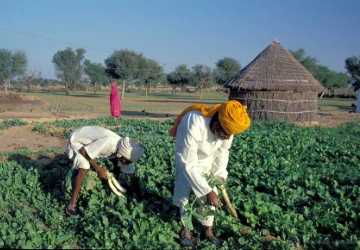Understanding the Fundamentals of Agricultural Insurance
Agricultural insurance is paramount for farmers and agribusinesses. It provides a safety net against risks such as natural calamities, crop failure, and market fluctuations. Insurance for agriculture helps mitigate financial setbacks, ensuring the continuity of farming operations. This type of insurance encompasses various facets, including farm structures, machinery, livestock, and crops.
Types of Agricultural Insurance
1. Farm and crop insurance
2. Livestock insurance
3. Machinery and equipment insurance
4. Farm liability insurance
Each type of agriculture insurance offers bespoke coverage tailored to the unique requirements of farming and rural enterprises.
Significance of Farm and Crop Insurance
Farm and crop insurance is indispensable for safeguarding the livelihood of farmers. It covers losses due to inclement weather, pests, diseases, and other unpredictable events. This insurance ensures that farmers can rebound from adversities without enduring severe financial distress.

Advantages of Farm and Crop Insurance
- Financial stability: Offers a financial cushion against unforeseen losses.
- Risk management: Aids in the strategic planning and management of risks.
- Loan eligibility: Insured farmers have a higher likelihood of securing loans.
- Peace of mind: Alleviates concerns about potential disasters.
Selecting the Appropriate Insurance for Agriculture
Choosing the right insurance for agriculture necessitates meticulous consideration of various factors. Farmers should evaluate their specific needs and risks, and compare diverse insurance products. Here are some guidelines for selecting the most suitable policy:
Guidelines for Selecting Agricultural Insurance
- Assess your needs: Determine the particular risks your farm encounters.
- Compare policies: Examine different insurers and the coverage they provide.
- Read the fine print: Comprehend the terms and conditions of the policy.
- Seek expert advice: Consult with insurance professionals or advisors.
Rural Insurance Solutions
Rural insurance solutions are crafted to address the unique challenges faced by rural communities and agricultural businesses. These solutions encompass a broad spectrum of risks, including property damage, liability, and personal accidents. Insurance for agriculture within rural insurance solutions offers extensive protection for farmers and rural entrepreneurs.
Key Attributes of Rural Insurance Solutions
- Comprehensive coverage: Encompasses property, liability, and personal risks.
- Customizable policies: Tailored to the specific needs of rural enterprises.
- Affordable premiums: Designed to be accessible for small and medium-sized enterprises.
- Support services: Provides additional support such as risk assessment and management guidance.
How to Maximize the Benefits of Agricultural Insurance
To maximize the benefits of your farm and crop insurance, it’s crucial to understand your policy and take proactive steps in managing risks. Here are some strategies:
Strategies to Optimize Insurance Benefits
- Regularly review your policy: Ensure it continues to meet your needs.
- Keep meticulous records: Document all farm activities and losses comprehensively.
- Implement risk management practices: Employ preventive measures to mitigate risks.
- Stay informed: Stay updated with changes in the agricultural insurance sector.
Evaluating the Scope of Agricultural Insurance Coverage
Agricultural insurance can exhibit significant variations in terms of scope and coverage. Grasping these distinctions is imperative for farmers to select the most advantageous policy for their requirements.
Critical Elements of Coverage
- Yield protection: Shields against lower-than-expected yields due to natural calamities.
- Revenue protection: Ensures financial stability by covering discrepancies between anticipated and actual revenue.
- Comprehensive policies: Integrate multiple coverage types, offering extensive protection.
- Index-based insurance: Utilizes predefined indices (e.g., precipitation levels) to determine payouts.
Exploring Regional Variations in Agricultural Insurance
Insurance for agriculture is influenced by regional elements such as climate, local farming practices, and regulatory environments.
Regional Considerations
- Climate impact: Diverse regions encounter unique climatic challenges that shape insurance needs.
- Regulatory frameworks: Local statutes and regulations can affect the availability and conditions of insurance.
- Cultural practices: Traditional agricultural methods may necessitate specific insurance products.
- Market access: Proximity to markets can influence the risk profile and insurance requisites.
Innovations in Agricultural Insurance
The domain of agricultural insurance is advancing with new technologies and innovative methodologies aimed at enhancing coverage and efficiency.
Technological Advances
- Remote sensing: Satellites and drones furnish precise data for assessing crop health and damage.
- Blockchain: Augments transparency and trust in insurance dealings.
- Big data analytics: Aids in forecasting risks and customizing insurance products.
- Mobile platforms: Enable effortless access to insurance information and claims processing.
Challenges and Solutions in Agricultural Insurance
Farmers frequently encounter obstacles when attempting to secure adequate insurance coverage. Identifying these issues and exploring resolutions can augment the efficacy of insurance for agriculture.
Common Challenges
- High premiums: Can be prohibitive for small-scale farmers.
- Complex procedures: May dissuade farmers from applying for insurance.
- Lack of awareness: Numerous farmers are uninformed about available insurance options.
- Claims processing delays: Slow payouts can exacerbate financial strain.
Effective Solutions
- Subsidized premiums: Government subsidies can render insurance more affordable.
- Simplified processes: Streamlining application and claims procedures enhances accessibility.
- Education programs: Increasing awareness about the benefits and availability of insurance.
- Efficient claims management: Utilizing technology to expedite claims processing.
The Role of Government and NGOs in Agricultural Insurance
Government and non-governmental organizations play a pivotal role in the propagation and implementation of rural insurance solutions.
Government Initiatives
- Subsidies and incentives: Lower the cost of insurance for farmers.
- Regulatory support: Ensures equitable practices and consumer protection.
- Public-private partnerships: Harness private sector expertise and resources.
NGO Contributions
- Awareness campaigns: Inform farmers about the significance of insurance.
- Capacity building: Provide training and support for efficient insurance management.
- Advocacy: Work towards favorable policies and practices in agricultural insurance.
Case Studies of Successful Agricultural Insurance Programs
Analyzing successful case studies can yield valuable insights into the execution and impact of agricultural insurance.

Notable Examples
- India's PMFBY: The Pradhan Mantri Fasal Bima Yojana (PMFBY) has markedly increased farmers' insurance coverage.
- Kenya’s Index-Based Livestock Insurance: Employs satellite data to provide prompt payouts to pastoralists.
- Mexico’s CADENA Program: A governmental initiative offering weather-indexed insurance to small-scale farmers.
- China’s Agricultural Insurance Expansion: Government policies have driven rapid growth in coverage.
Future Trends in Agricultural Insurance
Anticipating future trends can assist farmers and stakeholders in preparing for changes in the agricultural insurance landscape.
Emerging Trends
- Climate change adaptation: Insurance products will evolve to address climate-related risks.
- Sustainability incentives: Policies that promote sustainable agricultural practices.
- Customized products: Tailored insurance solutions for niche farming activities.
- Global collaboration: Increased cooperation between countries to share best practices and resources.
Conclusion
Navigating the world of agricultural insurance can be intricate, but understanding the fundamentals and knowing what to seek can help farmers make informed decisions. Insurance for agriculture is vital for protecting against financial losses and ensuring the sustainability of farming operations. By selecting the right farm and crop insurance and exploring rural insurance solutions, farmers can fortify their livelihoods and concentrate on their agricultural endeavors.


